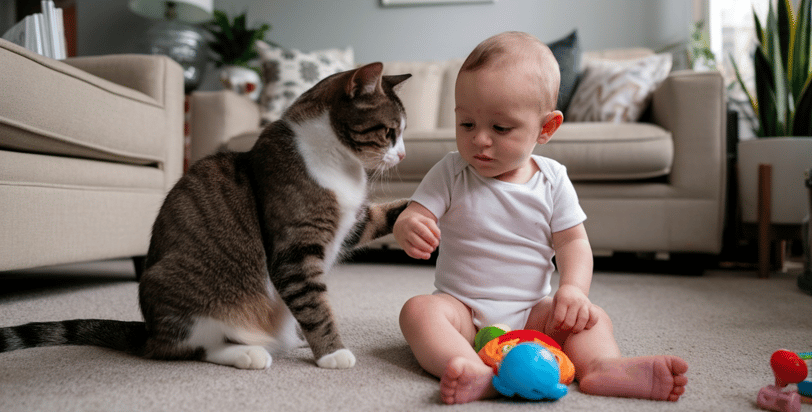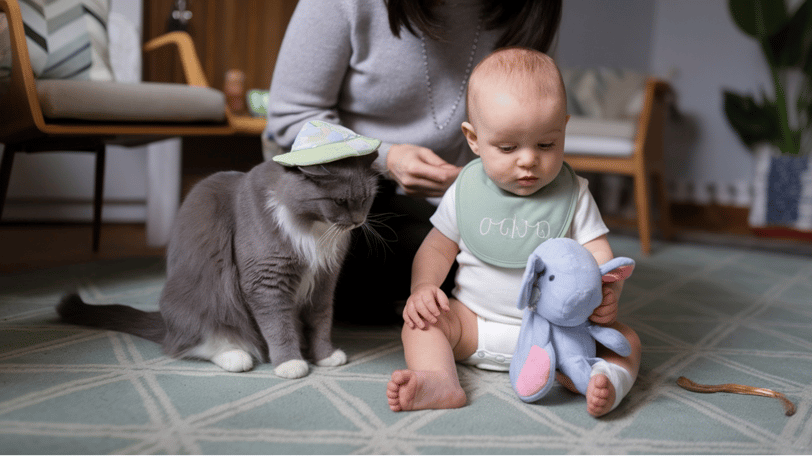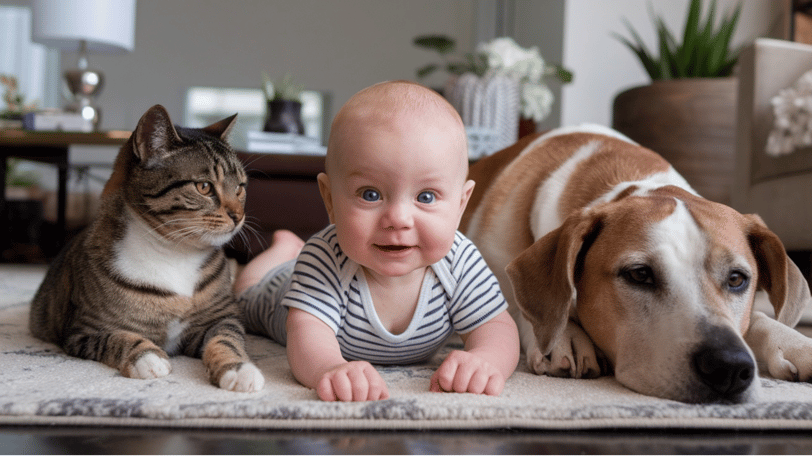5 Tips for Introducing Your Baby to Pets
Learn how to introduce your baby to pets safely and smoothly with these essential tips. Introducing your baby to pets is an important step in creating a harmonious bond between your baby and furry friend.


Introducing my baby to the family pet has been both exciting and a little nerve-wracking. After all, pets are often much-loved members of the family, and I want to make sure the transition goes smoothly for both my furry friend and my new little one. Whether I'm introducing a playful dog, a curious cat, or another pet, these five tips will help ensure a positive, stress-free experience for everyone involved. With a little preparation and patience, I can create a harmonious home where both my baby and pet feel safe, loved, and included.
1. Prepare Your Pet in Advance
Before your baby arrives, start preparing your pet for the upcoming changes. Pets thrive on routine, and introducing a baby can disrupt their usual patterns. Begin by gradually adjusting your pet's schedule to match the new routine you anticipate once the baby is home. For example, if your pet is used to being the center of attention, gradually reduce the time you spend with them so that they become accustomed to receiving less attention.
It's also helpful to introduce your pet to new baby-related smells and sounds. Play recordings of baby noises at a low volume to familiarize your pet with the sounds they will soon encounter. Additionally, consider bringing home a blanket or clothing item that has your baby’s scent on it before the introduction. This will help your pet become more comfortable with the new smells associated with the baby.
2. Create a Safe Space for Your Pet
When introducing your baby to your pet, it’s crucial to establish a safe space where your pet can retreat if they feel overwhelmed. This space should be an area where your pet can relax and feel secure, away from the hustle and bustle of baby care.
For dogs, a designated room or a comfortable crate can serve as their safe space. For cats, a quiet area with a cozy bed or a perch where they can observe from a distance works well. Ensure that your pet has access to this space at all times, especially during the initial stages of the introduction.
Allowing your pet to retreat to their safe space will help them feel more in control of the situation and reduce any anxiety they may experience. This, in turn, will make the introduction process smoother and less stressful for both your pet and your baby.


3. Supervise All Interactions
Safety should be your top priority during the introduction process. Always supervise any interactions between your baby and your pet, especially during the first few weeks. Even the most well-behaved pets can react unpredictably to a new baby, so it's essential to monitor their behavior closely.
When introducing your pet to your baby for the first time, keep the interaction short and positive. Allow your pet to approach the baby at their own pace, and avoid forcing any contact. Praise and reward your pet with treats for calm and gentle behavior. If your pet shows signs of discomfort or anxiety, such as growling, hissing, or retreating, calmly remove them from the situation and try again later.
As your baby grows and becomes more mobile, continue to supervise their interactions with your pet. Teach your baby to be gentle with the pet and avoid pulling on their fur, ears, or tail. Reinforce positive behavior from both your pet and your baby to build a strong bond between them.
4. Teach Basic Commands
Before your baby arrives, it's essential to ensure that your pet is well-trained and responsive to basic commands. Commands such as "sit," "stay," "leave it," and "come" can be invaluable when managing interactions between your pet and your baby.
If your pet hasn't already mastered these commands, start working on them as soon as possible. Positive reinforcement training methods, such as using treats and praise, can help reinforce good behavior.
Additionally, consider enrolling your dog in a training class or working with a professional trainer to address any behavioral issues before the baby arrives. A well-trained pet is more likely to remain calm and well-behaved during the introduction process, making it easier to manage their interactions with your baby.


5. Prioritize Your Pet’s Well-being
Finally, it’s essential to prioritize your pet’s well-being throughout the entire process. The arrival of a new baby can be a big adjustment for your pet, and they may feel neglected or stressed by the changes in their environment. Make an effort to spend quality time with your pet each day, even if it’s just a few minutes of playtime or a walk around the block.
Incorporate your pet into your daily routine with the baby whenever possible. For example, take your dog on a walk while pushing the stroller or allow your cat to sit nearby during feeding time. This inclusion can help your pet feel like a valued member of the family, even as the dynamics shift.
If you notice any signs of anxiety or behavioral changes in your pet, consider consulting with a veterinarian or a pet behaviorist. They can offer guidance and support to help your pet adjust to the new family member and ensure their overall well-being.
Welcoming my baby into a home with a pet is a crucial milestone that requires careful preparation and patience. By preparing my pet, creating a safe environment, supervising their interactions, teaching essential commands, and prioritizing my pet’s well-being, I can ensure a smooth transition. With time and consistent effort, my baby and pet can build a loving, lasting bond that will enhance our family life.
